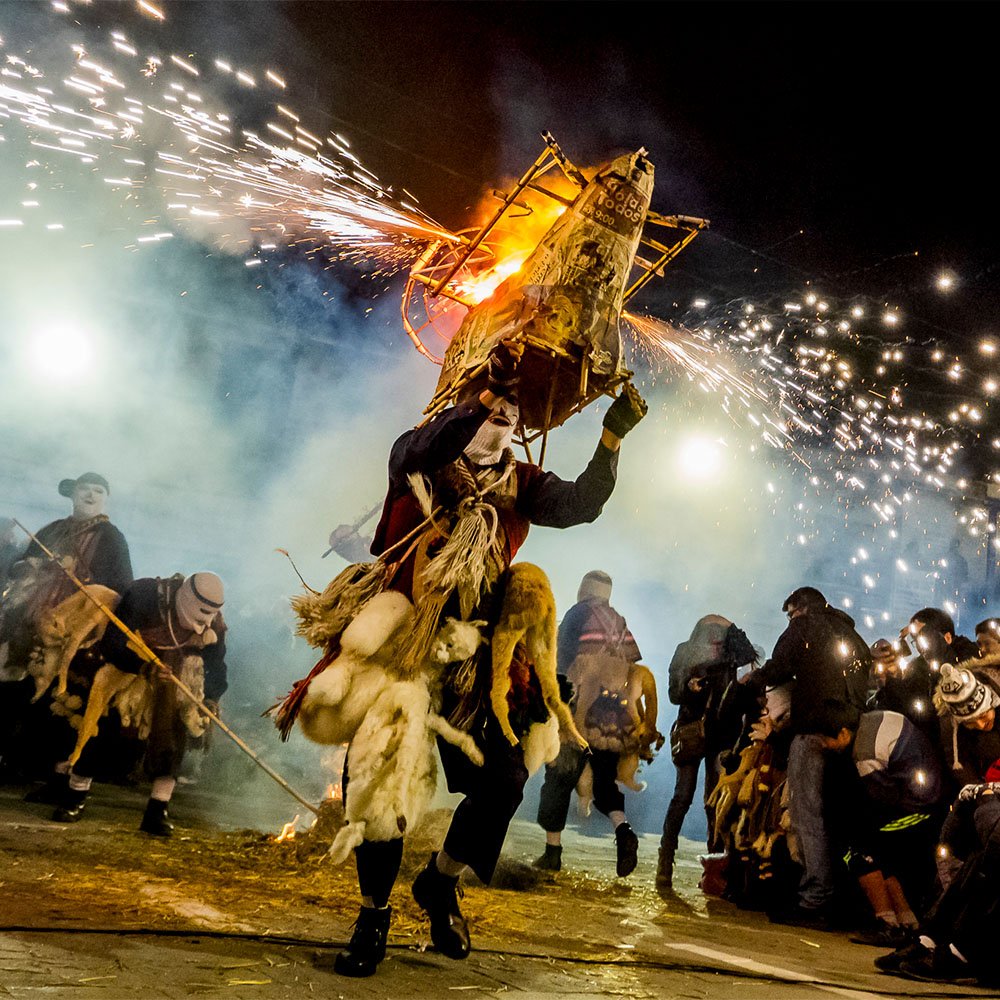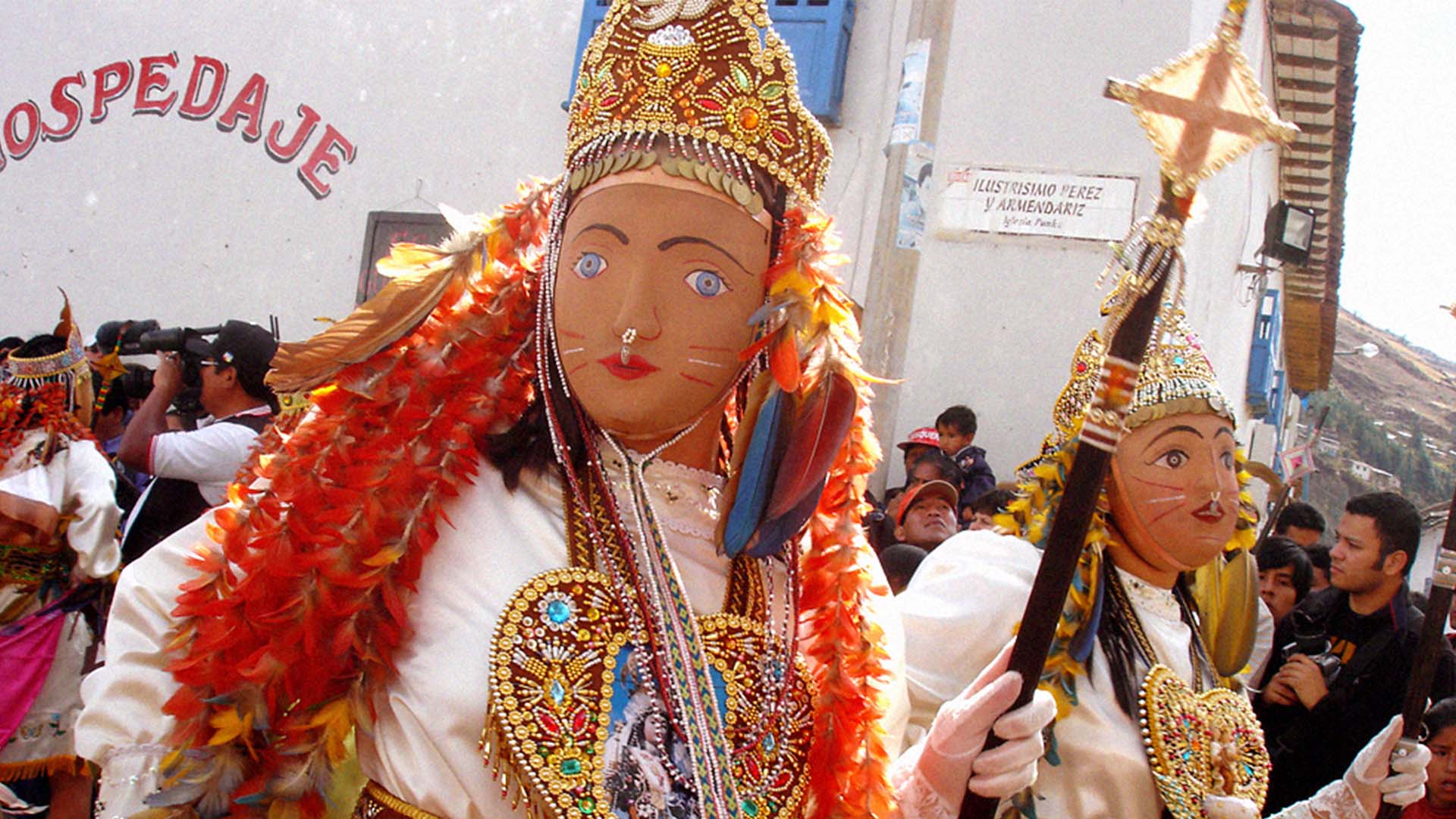

The Festival of the Virgin of Carmen in Peru is celebrated in various localities across the country. Its devotion dates back to colonial times when Spanish missionaries established her image among the Peruvian people. Since then, it has gained significant cultural and religious importance.
Table of Contents
This festival is celebrated in six cities in Peru, each with its vibrant touch of custom and tradition:
Despite being a celebration that spans many cities, the most prominent is the one held in Paucartambo, where a festival that brings together thousands of devotees takes place.
During the government of Don Pedro Fernández de Castro Andrade, Count of Lemos, he traveled to Upper Peru, now known as the highlands of Peru, via Puno to reach Cusco. It was in Puno that he was notified of a miracle in the town of Pucará.
The villagers reported that the image of the Virgin had appeared on a rock. This piqued the curiosity of the Viceroy, who personally went to verify the event. Upon arrival, he was amazed by the perfection of the image and immediately after returning to the capital, he commissioned a renowned painter to travel to Pucará and capture the image on a canvas.
Once the painting was completed and later transported to the capital, the viceroy ordered the sculpting of two identical images of the same size as the apparition. One of the images was sent to Pucará to be venerated in the local temple, and the second was sent to Puno for the same purpose.
However, years passed, and the image intended for the people of Puno was never collected, remaining in Pucará. This information reached the ears of Doña María Campos, who had a comfortable economic situation. She frequently traveled between Puno and Paucartambo. Thus, she made the necessary arrangements and transported the image to Paucartambo.
From the moment of its arrival, the festival in honor of the Virgin of Carmen began to be celebrated.
The Virgin of Carmen was declared the “Patroness of Folkloric Dances” in 1972. Additionally, during Pope John Paul II's visit in 1985, the virgin was taken to Cusco to be crowned.


From July 15 to 19, thousands of believers gather in the town of Paucartambo to worship the “Mamacha Carmen,” as the Virgin of Carmen is traditionally known. This is due to the integration of religious elements and Andean tradition.
The celebration begins in the Paucartambo temple, where faithful from all over the world gather to strengthen their bonds of devotion to the Virgin of Carmen. Here, bands play their instruments while dancers demonstrate their devotion through dance.
The festival lasts for 4 days, during which various civic and religious acts are performed, all supervised by the Paucartambo people. During the day, the comparsas parade through the narrow streets of Paucartambo, preceded by their bands. Pilgrims mingle with the dance troupes, blending into a magical celebration.
Every day, dance troupes or groups perform, and on the main day, the Virgin is carried in procession to bless the attendees and ward off demons. The “Saqras” dancers perform gymnastic and daring feats on the rooftops, showcasing their Inca and colonial-style outfits. At the end of the procession, a battle against the demons is staged, with the faithful emerging victorious.
Finally, everything concludes with the “kacharpari” or farewell party. On this day, the streets fill with dances paying homage to the Virgin and promising to return next year. After a final blessing, the dances move to the central plaza, performing the “kacharpari,” which consists of a farewell using handkerchiefs.
Paucartambo, located at an altitude of 3,017 meters in the Cusco region, is a historic town known for its colonial architecture and the vibrant festival of the Virgin of Carmen, celebrated every year between July 15 and 19. The journey from Cusco to Paucartambo takes approximately three hours.
Buses to Paucartambo can be found on Av. Diagonal Angamos, a few blocks from Av. La Cultura. The fare is approximately S/ 15.00. Taxis are also available in the area, and you can negotiate the fare.
45 km from Paucartambo is the Tres Cruces viewpoint, also known as the Balcony of the East, a natural viewpoint of the Amazon. From here, you can witness one of the most impressive sunrises in the world.
At this location, the so-called white ray phenomenon occurs, a natural event produced when the sun appears on the horizon, and the clouds begin to disperse while mixing with the humidity. The light is distorted as if passing through a prism, showing an effect of three suns, one of which jumps from one side to the other. This natural phenomenon can be observed between June and July.
Trips to the viewpoint depart at 1:00 am, and the travel time is approximately 2 hours. The spectacle begins at 4:30 am and lasts until 6:00 am.


The Festival of the Virgin of Carmen in Paucartambo is characterized by being accompanied by various dances, full of color and energy. Here are the most representative dances of the Virgin of Carmen.
This dance represents the native Amazonian warriors of the Qósñipata Valley (a district in the province of Paucartambo). Their attire includes multicolored feathers called “ch'ucu,” long hairpieces, wire mesh masks, “unku” as a skirt, and they carry a “chonta” spear. The band accompanying their dance is typical and includes: two flutes, a drum, and a bass drum.


This dance represents the merchants of Qollasuyu, dating back to colonial times when they came to Paucartambo to trade their products. The dancers wear beautiful hats, a “waq'ollo” or balaclava, and the “q'epi,” a shawl made of vicuña, which contains a stuffed vicuña.
The dance is rooted in faith to the “Mamacha del Carmen,” to whom they sing, dance, and bring joy during the festival. Additionally, the dancers are obliged to attend the pilgrimage of the Lord of Q'oyllur R'iti.


This dance recalls the colonial era when the black population was enslaved and brought from the coast to work in the gold mines. For various reasons, they ended up in Paucartambo and became devoted followers of the Mamacha Carmen.
Their attire has a stately appearance and includes a chain at the side of the waist, reflecting their previous condition as slaves. Additionally, they carry the “maki,” a wooden accessory shaped like an arm with a closed fist.
Today, the Blacks of Paucartambo consider themselves the slaves of the Virgin of Carmen, to whom they offer their beautiful and wonderful dance and their sentimental songs.


This dance is characterized by its mischievous dancers with striking costumes and masks representing underworld animals such as dogs, jaguars, and vampires.
During the Virgin of Carmen procession, the Saqras climb onto rooftops and balconies, performing acrobatics to entertain the audience. They also simulate a confrontation between the Virgin and the demonic, with the Virgin always emerging victorious.


The “Danzaq” or “Tusuq” is a dance attributed to being the seducer of fifteen-year-olds, the conqueror of married women, and the consoler of widows. This group is characterized by their colorful costumes and elegance in their dance. It is said that this dance was banned over two centuries ago due to its erotic origin.


This dance represents the women from the jungle of Q'osñipata, who came to Paucartambo to venerate the Virgin of Carmen. However, their costumes have a strong mestizo influence, as they wear a crown adorned with Amazonian bird feathers and a typical dress from the colonial era. Additionally, they wear a decorated image of the Virgin on their chest.
The music accompanying them is very cheerful, matching the dancers of this dance, as most are young and slender women.



Happy passengers